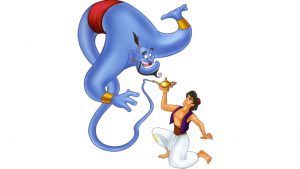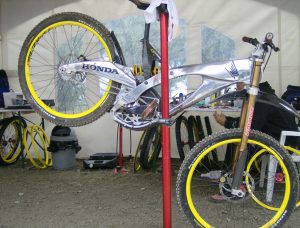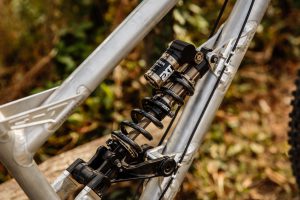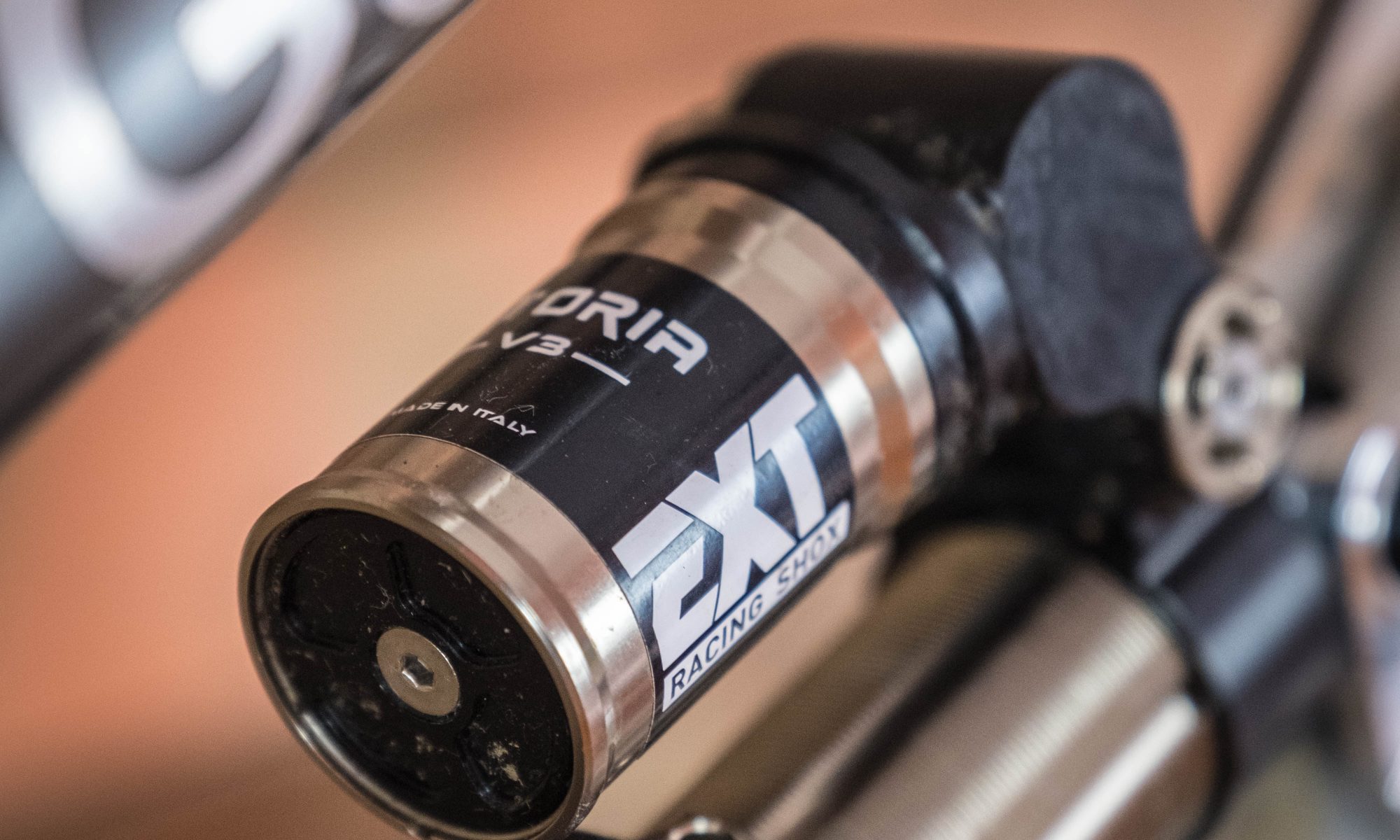G1 Concept – EXT STORIA LOK V3
Written by Admin - 20th February 2019
Three Wishes?

As part of the design process of the G1 we always had the ‘wishlist’ of goals at the back of our mind.
Some of those wishlist items are reliant on new technologies and some of them are reliant on other companies changing standards to allow new things to happen.
But some of them just require companies to simply step up and build something against the grain of what the bike industry does out of habit!! EXT don’t just blindly follow the rest of the bicycle industry out of habit, so their shock with Spherical bearings is just such a case and although the shock’s innovation goes beyond the sphericals, let’s start there…
Weight a minute…
Quite a few years ago I got a chance to ride Honda RN01… The suspension despite being a single pivot was the best feeling suspension I had ever felt. It was dynamic, gave great feedback, had grip and the bike steered flawlessly. It did all of this despite weighing a lot more than everything else out there at the time and having angles that suited a Japanese person rather than, er, me…
The shock was massive and it was heavy… Part of the reason that the shock was heavy and also most of the reason that the shock worked well was because it was equipped with spherical eyelet bearings.
All other forms of performance suspension systems use spherical bearings in the eyelets because any side load on a suspension system creates un-wanted friction. Friction isn’t the best way to create support or feel in a suspension system because in a system that utilises a tyre or creates some flex in the chassis that tyre movement or flex can turn sliding friction into static friction. At that point you have completely unpredictable response from the suspension. Instead of an undamped tyre working in conjunction with a damped sprung suspension system on compression and rebound – you end up with a stepped system where the un-damped tyre takes turns to compress and rebound at a level where it can overcome the static friction in the suspension system. Both of them overloading each other in a jerky, bouncy feedback loop… Did anyone say ‘plus tyres’?

So… Back to the weight thing…
The bicycle industry wants to make your bike as light (and flexy) as possible because that is the only performance metric that you can measure in a sales brochure… That includes using aluminium shock bushes and plastic eyelet bearings because they are small and light. They can be packaged into very small spaces in a bicycle which needs a lot of shock travel in small eye to eye measurements and don’t need large eyelets to accommodate them. But… They suck at rotating under side loads!
Standards wars…
So, we haven’t been able to fit decent sized, long lasting spherical bearings into shock eyelets because of the travel vs shock length space requirements. Until RockShox came up with their ‘Metric’ shock standards! At the time of the launch of Metric one of the reasons cited was to allow ‘new technologies’ that may exist in the future space to exist inside the shock. All of a sudden we have space for the eyelets to grow and accommodate decent spherical bearings whilst retaining full travel and bearing overlap in the shock shaft! Result!
When we received the first of the shocks equipped with spherical eyelet bearings it was quite damp on the trails. I had on the front of the bike a freshly built Mojo MORC 36 for with dual crown system so static and sliding friction at the front was minimal and I had the stock ‘normal’ bushing shock to ride back to back with the spherical shock…
The first trail I rode was a local, flowy trail with leaves, and flip-flop turns all with a very slight wide groove made by my tyres over many years! I normally use the whole of the groove and rely on both wheels sliding to the outside camber when it’s wet. It’s a great trail for that delicious but not quite predictable, feet up turning but sliding feeling. Love it! Did some runs on the normal eyelets and did all the usual things and loved it!
Then I put the spherical eyelet shock on (same settings) and was pleased to feel the amount of energy I got back from the suspension as I was riding the first straight(ish) flowy bit of trail pumping the bike on the features. I was still thinking of that great difference in feel as I turned into the first flat turn, dropped the outside pedal and then kept steering and gripping in the middle of the turn so much that I ended up turning too much and coming off the track over the adverse camber on the inside of the groove!
It was such an amazing difference…
I decided that the rear shock was not binding mid-turn but was settling further into the travel than the ‘normal’ shock changing the dynamic angles and making the bike steer more but without losing grip! So by steering too much I was losing speed mid turn.
I then started adding high speed compression to mimic the action of the stiction (but without the un-predictability) to keep the bike on a straighter faster path. Worked a treat! I still had the pop and dynamism coming back from the shock on the rebound side, I still had the grip and feel in the turn but now the slide is linked to angle I push the bike to not a random stiction based tyre flex or chassis flex feedback loop…
Damping adjustments are now independent of shock stiction… AT LAST! 😉 It’s amazing how much support and resistance we get from the stiction, it’s only when it’s gone you notice it…
Space
The Metric standard that gave us the space for a set of Spherical bearings also gave us a bit of extra space internally. That gave us room to try a few new things inside…
The one thing that a balanced air spring can do that a coil normally doesn’t is to have negative travel at the maximum achievable top-out. If you know how to play with an air spring and can access the neg side to limit the volume then you can have that ‘bit in reserve’ at full top out even with a heavy wheel. Whereas a coil shock at full top out can have the full weight of the wheel sat on the top out pad… It isn’t much, but every time the wheel taps the floor from top out the weight of the wheel then must be overcome before the suspension can move. With a small coil negative spring inside the shock and a hydraulic top out stop so that we don’t over-power it on a fast rebound setting we can benefit from a small amount of negative travel and bike sag on the initial touch.
It doesn’t sound much to the layman!
But if I tell you that I saw datalogger traces from a 4 minute World Cup course where the suspension was at full extension for one whole minute! Then you’ll be able to understand why I worry so much about what I call the ‘initial touch’ rather than what most people call ‘small bump sensitivity’…
nEXT level
So the accidental by-product of a new, longer shock length to travel standard has allowed us to get a shock with three technologies new to the bicycle industry. Spherical eyelet bearings, hydraulic top out stop and a negative spring! Only EXT could have done this for us – trust me, I know because I’ve tried with other people 😉 Bringing a big dose of motorsport ‘can-do’ to MTB 😉

Words – Chris Porter
